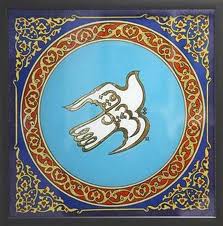Kazan (Volga Region) Federal University Hosted Najip Nakkash Exhibition
 Kazan (Volga Region) Federal University Hosted Najip Nakkash Exhibition
Kazan (Volga Region) Federal University Hosted Najip Nakkash Exhibition
Kazan (Volga Region) Federal University has accommodated a solo exhibition by Najip Nakkash, Meritorious Artist of Russia, member of the Union of Artists of Tatarstan. The exhibition features over 50 masterpieces — shamails on paper and on glass, tugras and even the artist’s family tree.
«My family is rooted in XVII century,» says Mr.Nakkash, «my ancestors were service class tartars, lashmans, who used to fell timber wood for shipbuilding. They were all very gifted. If they could receive education back then, they would all become artists. My father, a war veteran, was a good painter. He used to paint soviet posters, slogans... My uncle worked till he died at 81, the whole village turned to him for furniture, frame manufacturing. All my ancestors were talented craftsmen.»
Najip Nakkash received his artistic education in the Krupskaya People’s University of Art, he studied the Arab language at the Kursk State University, History and Philology Department. «Of course, as far as my sources of inspiration are concerned, the Holy Koran is undisputed leader, next come verses by our poets starting from the XIII century — Qol Ğäli, and up to modern times — Musa Cälil and Ğabdulla Tuqai. 15 of my works are dedicated to Tuqay, I even have his portrait,» says Mr. Nakkash.
The exhibition will be running until April 25, and on March 14 Najip Nakkash will act as a referee at the regular Arab calligraphy contest, organized by the Central Spiritual Administration of Muslims of Russia. «The participants will be challenged by various tasks, such as writing an ayah from the Holy Koran in three scripts — Naskh, Tulut, Diwani, or Nastaleeq. Everyone writes the same text and then we evaluate the participants» skill. Another task implies reading complex compositions by famous calligraphers," Mr. Nakkash commented.
According to the artist, every beginner should study calligraphic chefs d’oeuvre of the masters of old and copy them. «Copying, imitation is the first step,» says Najip Nakkash, «Your own style comes with time. In my opinion, a calligraphic work should be both beautiful in form and didactic in essence. A kind of enlightenment through beauty.»